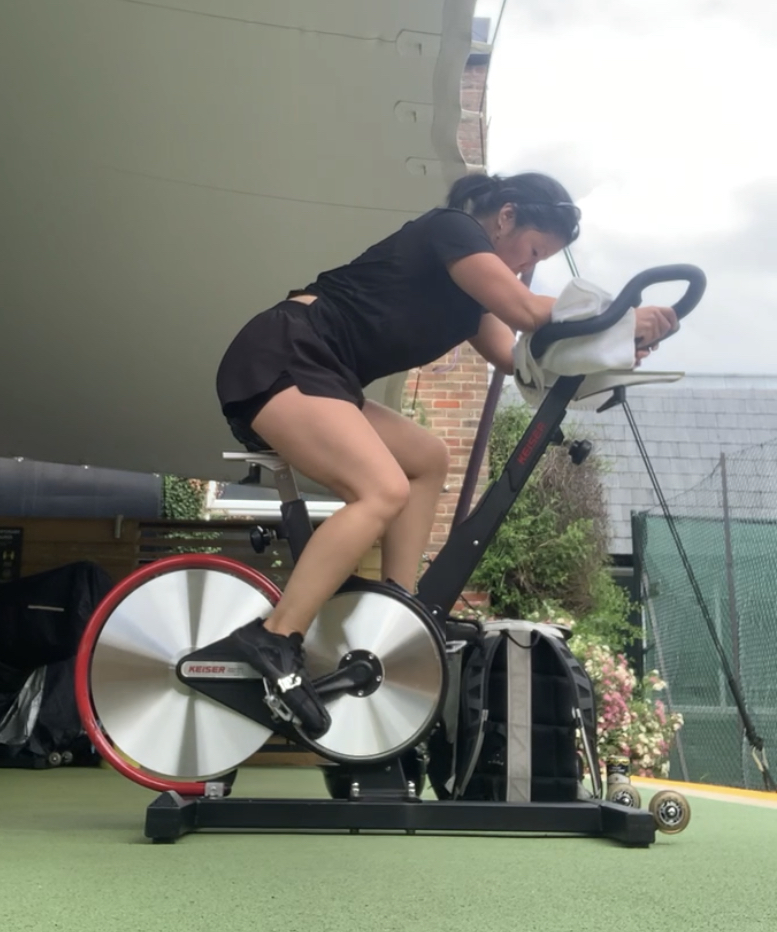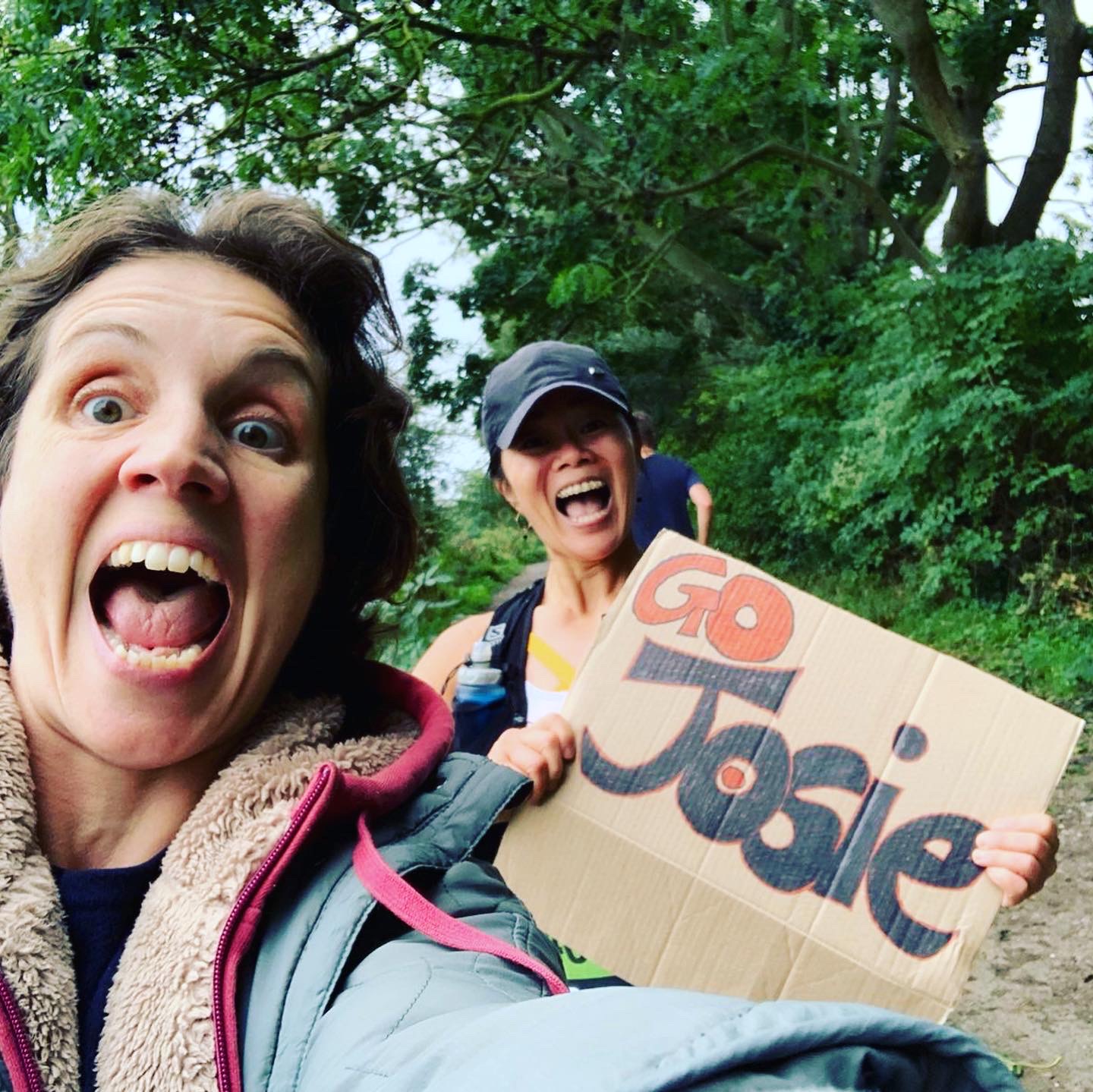On Sunday 3rd October 2021, I ran the Virtual London Marathon for Feed London. Despite what many people think, this was my first marathon experience. The process of training, preparing, and then running on the day has taught me a lot – both personally and professionally. This is why I’ve decided to share my story, my learnings, and my best tips, and I hope that in doing this I can help others with their marathon journeys.
Training and exercise
When I decided to sign up for the marathon, I was training in both CrossFit and Olympic weightlifting and thought that adding marathon training on top of my existing routine would be just fine. But I soon realised that weightlifting was making me stiffer and restricting my movement in certain parts of my body.
Plus, in all honesty, I went into marathon training thinking I was superhuman and could handle the additional activity, but the longest I’d ever run was half a marathon. I’m naturally quite competitive and like to think of myself as being younger than I am, but my body was telling me differently. I started experiencing fatigue and a lack of energy and soon realised I had to take hormonal health into account too.
So when I tore my right calf in the summer (more on that later) I made the difficult decision to cut down my existing exercise regime and stop both CrossFit and Olympic weightlifting. That in itself was a tough decision to make, as for a long time, these activities had given me focus and provided a great distraction from life and personal issues.
But lack of time was also a factor. I definitely underestimated how much time I would need to commit to preparing for the marathon. Training impacted my time in the week but also my weekends and social activities, my sleep, my diet, and I started to have to factor in the time needed for recovery too. Despite being a trained running coach, there’s definitely a lot I hadn’t taken into account until I went through the experience myself!
Dealing with injuries
As I mentioned earlier, in the summer I tore my calf. This happened as I was showing a patient a running drill – something I’d done countless times before. I wasn’t even running!
Obviously, tearing my calf impacted and delayed my training, but that’s what really made me stop and (possibly for the first time during my training) analyse and re-evaluate what I was doing. In my case, I realised that the mobility of my left knee was getting restricted because of all the weightlifting I was doing. Plus, I’d noticed the bunion on my left foot was getting worse, and the restricted mobility in my knee was affecting my left hip, which made me overcompensate on my right side, made the calf tight, and left me exposed to injury.
Introducing mobility and activation exercises
After my calf injury, I listened to my body and changed course. I not only stopped CrossFit and weight training (activities that don’t work so well with running), but I switched to bodyweight exercises and started having treatment at our clinic nearly every week. I really started practising what I preach by targeting my left hip with mobility exercises and by re-educating my left foot – focusing especially on the connection between the foot and the ground. Because when that’s not optimal, your glutes won’t activate when you run.
I introduced a lot more mobility and activation exercises to my routine and started using toe spacers at home and barefoot shoes as much as possible. The benefits of doing this? Within three weeks of my injury, I was back to running. But I was also able to pass everything I’d learnt and incorporated into my training to my face-to-face running technique crew. And the feedback was that the hip mobility work made a huge difference to their back pain and their running.
So if you feel any pain during your training or in the days leading up to the marathon, don’t ignore it. Instead, seek advice and listen to that advice. In some cases, as crushing as it might be for people to pull out of the race, it’s much better for you to delay your marathon than to create long-term damage to your body that might prevent you from running in the future.
And if you want to find out more about my face-to-face running technique sessions, get in touch.

Preparation and running technique
As a trained Sports Therapist and running coach, I was able to devise and plan my own training programme. If this is your first marathon, however, I’d advise starting by either reading running blogs or contacting someone who’s been through the experience and asking how they trained. If at all possible, either contact a running coach or a physio/Sports Therapist with running experience.
In terms of running technique, it’s hard to know how you run when you can’t see yourself. If you know what to look out for, you could try taking a video of yourself running from the side and assess your own form. Or we can do that for you at the clinic. But if you’re experiencing any pain or issues like broken toenails, knee pain (known as runner’s knee), back pain, shin splints, or blisters, these are telltale signs of poor technique. So if this is you, I’d recommend you have your running technique analysed by a coach.
Diet and nutrition
When it comes to diet and nutrition, you’ll probably find the need to increase your protein intake. This helps you build muscle, recover quicker, and also avoid injury. As a runner, you need 50-75% more protein in your body. And it’s important you don’t cut calories during your training or on the day of your marathon.
Personally, I mainly follow a plant-based diet, but often during my training, I felt the need to make changes and eat some meat, especially during those times when I felt my body needed more protein.
My advice would be to try to eat at least within 2 hours before your run and then again within the hour after completing a run, especially the long runs. For anything longer than 10 miles, you should also fuel while you run to stay ahead of exhaustion and to maintain your energy levels. I carried plant-based sweets and gels. And of course, I’d recommend you keep an eye on your hydration levels – not just on the day but during your training too.
Running gear and shoes
When it comes to clothing, I recommend investing in proper running gear and not wearing anything brand new on the day. Cut tags off properly to avoid friction burns – it happened to me, both on my arms and my lower back, and it’s not pleasant! And also make sure you’re comfortable in what you’re wearing.
I chose to wear a hydration running vest, which allowed me to carry my water and my phone. It’s particularly important you don’t carry your phone in your hands or even on one of your arms. This is because doing this might affect your running. I also chose to wear compression socks to stop fluid pooling down my legs and to help with circulation.
When it comes to running trainers, I suggest you don’t buy online but rather obtain specialist and in-person advice. You need room for your feet to move so it’s important your trainers are fitted properly. If you’re unsure, check out places like Run and Become or Runners Need.
And if you are recommended to wear orthotics or insoles that are moulded according to the shape of your feet because one foot lands in a certain way, beware of that advice. Perhaps consult a running coach or Sports Therapist before you start wearing the insoles, as they might not be a necessity for you.
In fact, quite often when we see patients in our clinic, we find orthotics are recommended because of misalignment issues. But most of the time, this can be resolved with treatment and proprioceptive work to re-educate your muscles and joints. Wearing the insoles could actually create further problems and misalignment elsewhere as your body tries to overcompensate.
Headphones: to wear or not to wear?
During my training and on the day, I chose not to wear headphones. Personally, for me, safety plays a big part in that decision. And that’s especially true if you’re running on your own and across the busy streets of London. Plus, I believe it’s good to not become too dependent on them.
Another benefit of not wearing headphones is that you can hear the pounding of your own feet onto the ground. And if you notice that one foot sounds heavier than the other, it means you’re putting more pressure on one side of your body. This might indicate tightness or restrictions on one side, for whatever reason. Becoming aware of the way you move and run during your training can be invaluable. It gives you the opportunity to get that checked out so you can start running more efficiently (and potentially faster) and avoid pains and niggles down the line, which could eventually result in an injury.
Mindset is everything!
Whether you’re wearing headphones or not (but particularly if you aren’t) training for a marathon and then running on the day means you’ll be spending a lot of time in your own head. You’ll be alone with your own self-talk for a long time. So it’s important you make that something positive to listen to and make a conscious effort to pay attention to what your mind is telling you. When the going gets tough, your mind will turn on you!
I found my longest run in preparation for the marathon (20 miles) the toughest. After I got back from that run, I found myself crying in the bathtub. And I realised how crucial it was to not be down on myself. It’s part of the reason why during my training I moved away from running for time and decided to try and enjoy the experience instead. I focused on changing my mindset, keeping thoughts positive, and repeating a series of mantras like:
“I am a marathon runner.”
“My feet are like feathers.”
“I am trained and I can do this.”
Or “I have trained and improved my technique.”
So my advice is to not be too hard on yourself and don’t doubt yourself. Remember that no matter how things go on the day, you’ve already achieved a lot by just doing the training and preparation. Most people don’t go through any of that process or training in their lifetime! Being there on the day is already an incredible achievement. And you should recognise it and pat yourself on the back for that.

On the day
Preparation is key, especially if you’re running the virtual marathon. You need to plan your route well in advance and stick to it – your running route has to be familiar. You want to know what to expect and definitely don’t want any surprises (like road closures?) on the day.
Aside from planning what you’re going to wear and bring with you (hydration and quick snacks), I recommend you plan any toilet breaks you might need. It’s also important to think about support. This is particularly important as unfortunately with the virtual marathon you don’t have the crowds to push you along.
Mentally, I split the race into three segments. And that helped with motivation and mindset. But I also arranged for some people to meet me at certain points. And my son cycled alongside me during the last few miles. And that was incredibly helpful and uplifting.
It’s worth mentioning that when running the virtual marathon, you have 24 hours to complete it. Although I don’t know anyone who’s done that, if you wish, you could decide to do two separate runs to cover the distance.
In the end, despite finding the training harder than I thought, I enjoyed the day. I completed my run in 5 hours and 4 minutes. But I also stopped along the way to talk to the people who came to support me. And if spotted something I wanted to capture, I’d stop and snap a quick picture too. And that’s because I was able to make the choice to let go of the pressure ahead of time.
So there you go – my marathon experience and top tips. Did you run a marathon? What did you learn from it? If you’d like our support to train for your first or next marathon, feel free to get in touch.

